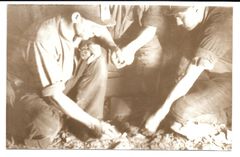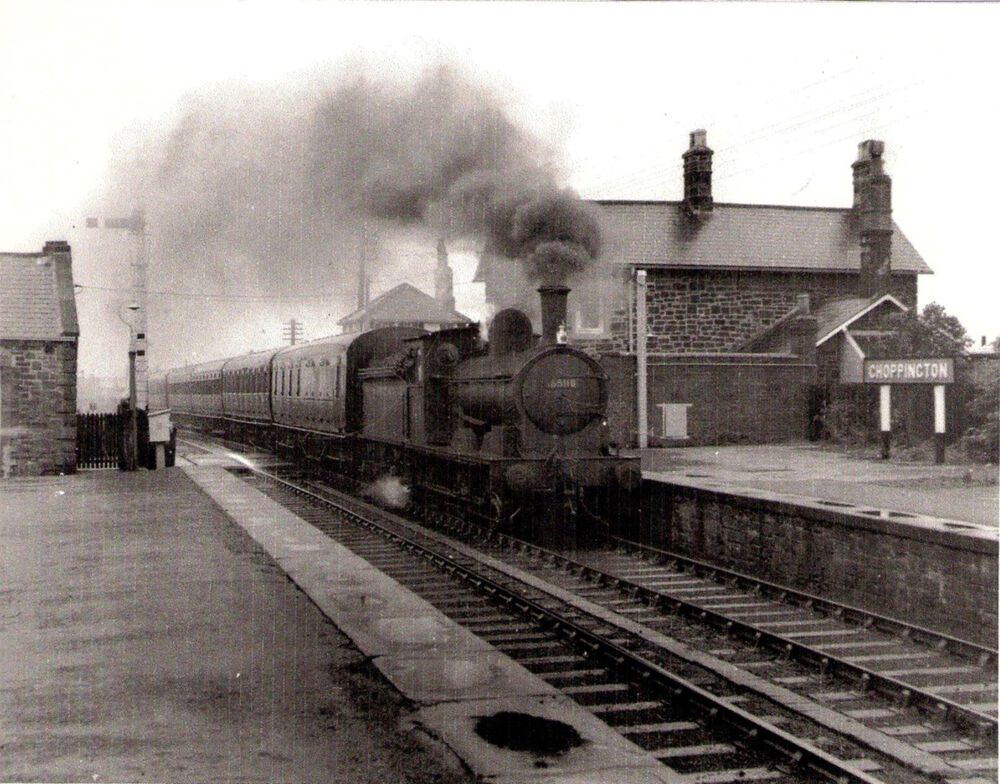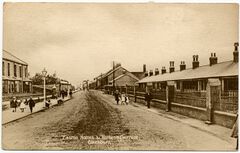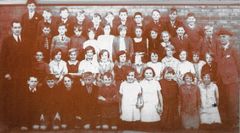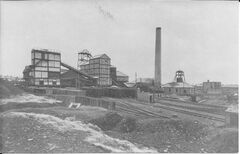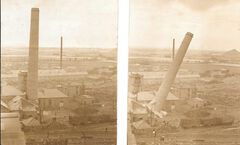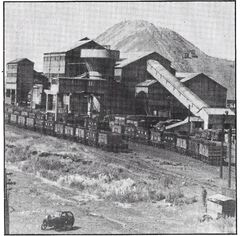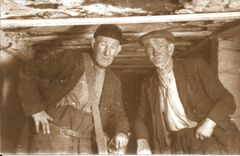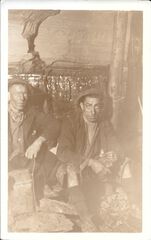
James
Members-
Posts
204 -
Joined
-
Last visited
-
Days Won
49
Content Type
Forums
Gallery
Events
Shop
News
Audio Archive
Timeline
Everything posted by James
-
-
From the album: Doctor Pit Welfare Park
-
-
Bed Amateur FC 1919-20 season.jpg
James commented on Alan Edgar (Eggy1948)'s gallery image in Sports
I’ve never heard of Bedlington Amateur FC but it’s a great photo with amazing quality. The photo mentions Price’s field at Hollymount and having grown up around Hollymount I looked closely at the photo to see where it was taken and it definitely wasn’t Hollymount. Before Hollymount Square was built there was a field between the Bell’s Place gardens and Hollymount Avenue but not big enough for a football field. At the top right of the team photo you can see the two chimneys of the Doctor Pit so the buildings behind the team are those down Vulcan Place and looking closely through the trees on the extreme right of the photo is the Whitley Memorial School. The photo I have attached of the school with the newly built houses of Hollymount Square would have been taken in the early 50’s (presumably taken from the church tower) and shows prefab classrooms that were only built in the late 1940’s. I have marked in green the spot where I am pretty sure the team lined up for the photo. Presumably the photo was taken at the football field where they played so it looks like it was on the field next to the school, part of which by the 1950’s were allotments. -
Old Colliery Row 1897 OS (2).png
James commented on Canny lass's gallery image in Historic Bedlington
The photo is taken from No 4 Old Colliery Row looking up towards the Black Bull. The gable end behind Mr Hemsted is No 6 Bell’s Place and this can also be seen in the google maps photo looking at the same view about 100 years later. The section of Bell’s Place that was demolished in the late 1940’s ran parallel and behind Old Colliery Row. To the right of the row were the toilets, and gardens. There was gas lighting and a couple of outside taps - no electricity. -
Old Colliery Row 1897 OS (2).png
James commented on Canny lass's gallery image in Historic Bedlington
-
This photo taken by Willie Ward shows 3 miners ‘cavilling’. This was a system used by teams and individuals on ‘piecework’ whereby lots were drawn to decide on their workplace. The ‘cavil’ was the workplace number written on the piece of paper. The system prevented management favouring a particular team or individual and also meant that it was the luck of the draw whether you ended up in a section with good or bad conditions which could often affect your earnings.
-
From the album: Doctor Pit and Rows
-
-
It was coal in the trucks not waste, The waste (overburden) from the opencast was put back in the “hole” and the raw coal transported to Bedside Colliery wash plant for cleaning. The photo shows the first Costain truck on the bridge.
-
I have no dates of the years that the Ewart Hill pit was in operation but the map shows it was disused in 1897. It had only one shaft 361 ft. deep and worked the Low Main Seam. Following the Hartley Colliery disaster in 1862 when 204 men and boys died of carbon monoxide poisoning, all collieries had to have at least 2 shafts so that in the event that one shaft was out of action or damaged in some way there was a second shaft for the underground workers to use as a means of escape. I assume from this that it must have closed before 1862. If anyone can download an earlier map of the Ewart hill area it may give some idea of when it was in operation. Long after the Ewart Hill Pit had closed, the Doctor Pit mined a connecting roadway to the shaft in the Low Main seam workings and used it as a downcast ventilation shaft. You can see the shaft “cap” (a concrete cover) from the road as you walk past the farm The photo shows the Low Ewart Hill farm that was demolished in the 1950's and the coal beneath it mined by the opencast. At the same time the road that used to pass this farm was diverted. This area is now the golf course.
-
Easton Holmes & Rothesay Terrace.jpg
James commented on Alan Edgar (Eggy1948)'s gallery image in Historic Bedlington
In one of Evan Martin’s books, he says that Easton Homes was built in 1907 and was named after Emily Easton who financed the building of the 12 cottages as well as St John’s Church. She was a director of the Bedlington Coal Company, owners of the ‘Aad Pit’ (Bedlington ‘A’ colliery). The cottages were built for retired miners who had worked for the company for least 50 years. -
Before they moved to Shiney Row, Andy and Flo Turnbull lived at the “bottom end” in No 27 Bell’s Place with their sons Bill, Bobby and Andy and our family lived near to them. Florence says they kept chickens in the garden at Shiney row. At Bell’s Place they not only had chickens but they also had a pig that the neighbours helped to feed with waste food we called “slops”. I’ll not mention what happened to the pig but I think you can guess! I have been hoping for years to find a photo of Bell’s Place and I thought that perhaps Frances may have one passed on to her by her grandparents. Bell’s Place was demolished along with Old Colliery Row in the late 1940’s and Hollymount Square was built on that site.
-
In the photo, No 1 is the first house with the shed in front of it. I assume the shed is in the side garden that Florence refers to. Being the end house it would have been the only one with a side garden. (I think Andy and Flo Turnbull lived there.) The Gardens on the left of the picture were the Doctor Terrace gardens. The Shiney Row gardens can’t be seen – they were on the south side of the row.
-
-
1930 Layna Bed Council.jpg
James commented on Alan Edgar (Eggy1948)'s gallery image in Historic Bedlington
-
HONEY SACK FARM. Could the farm have been fermenting mead? HONEY is the main ingredient in Mead. SACK is an old English term for fortified wine. According to Wikipedia, mead is also called HONEY WINE. If, in medieval times, wine was also called sack then honey sack and honey wine would have the same meaning. If this reasoning is correct (highly unlikely) then the farm's modern name would be Honey Wine Farm - sounds quite nice!
-
At the Doctor pit, in the early days, the main winder and the John Pit ventilation fan were driven by steam engines. As with all steam engines, each had a boiler in which coal was burnt to produce the steam to drive the engines and each had a chimney high enough to provide sufficient draft to efficiently burn the coal. The chimney of the main winder was 160 feet high and was demolished in 1921 when an electric winder was installed. I don’t know when the John pit fan was converted to electricity but the chimney was demolished in 1952.
-
Dr Pit Chimneys demolition 10th August 1952. Telephone row, Cross Row and brickyard in background.jpg
James commented on James's gallery image in Historic Bedlington
-
HPW Before the plant in the photo was built there was an old plant on this site that washed output from the Aad pit. The “new” plant was built on the same site as the old plant and continued to use the same dump. The wash plant in the photo was about 10 year old when the photo was taken but the discard dump as you say had been in use for over 100 years. The difference with the new plant was that it washed coal from both the Doctor Pit and the “A” Pit. In James Tuck’s book he states that this was part of a modernisation plan at the time of nationalisation of the mines in 1947. I’ve attached another photo of the “new” plant looking from the other side of the plant.
-
-
I assume you are referring to the 4 photos that have the caption at the bottom “……..working in the Doctor Pit in Bedlington”. These were posted on this site a few years ago (or possibly Facebook) and I made copies of them. They appear to be newspaper cuttings. This particular photo has an error – Steve Wash should read Steve Welsh. (You ask if I was related to anyone in this photo. It so happens that one of them was my wife’s uncle.)
-
Photo of two Wastemen at the Doctor Pit taken by Willy Ward. No names unfortunately. Wastemen were miners who were too old for heavy work and were employed to maintain the return airways – clearing falls of roof, renewing supports etc. and they often carried on doing this work even in their 70’s. Willy Ward worked at the Doctor Pit till it closed in 1968. He was an excellent photographer and a few of the photos I have posted were bought at his shop on Front Street East. I wish I had got more of them and taken a note of the names. (Many couples would have used Willy to take their wedding photos – we did!)
-
I got this photo at Willie Ward’s shop so I assume it was taken at the Doctor Pit. The person on the left is holding something I’d forgot about. I think we called it a “shotbox” – can anybody confirm? It was a canister to hold explosives. The person on the right is holding his carbide lamp. These were lamps with an open flame and were used at the Doctor Pit until around 1955 when they were replaced with electric lamps.

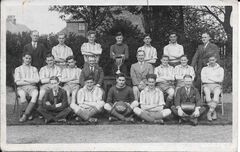

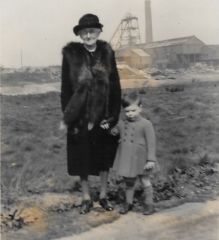
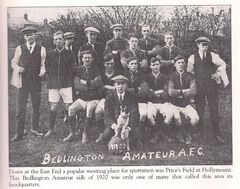
.png.8ed7f3d4753c93e5f45344da507f8d26.png)
